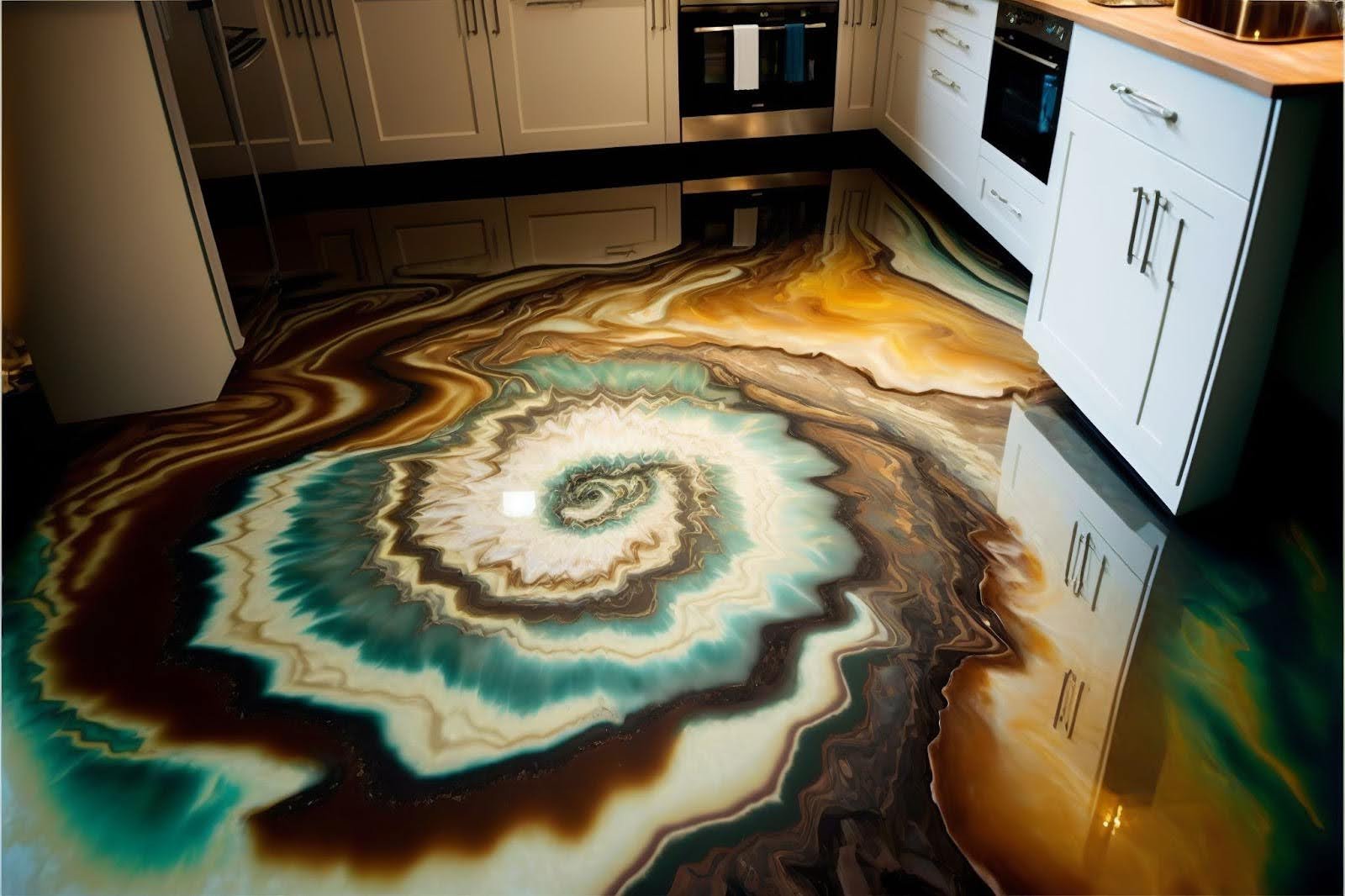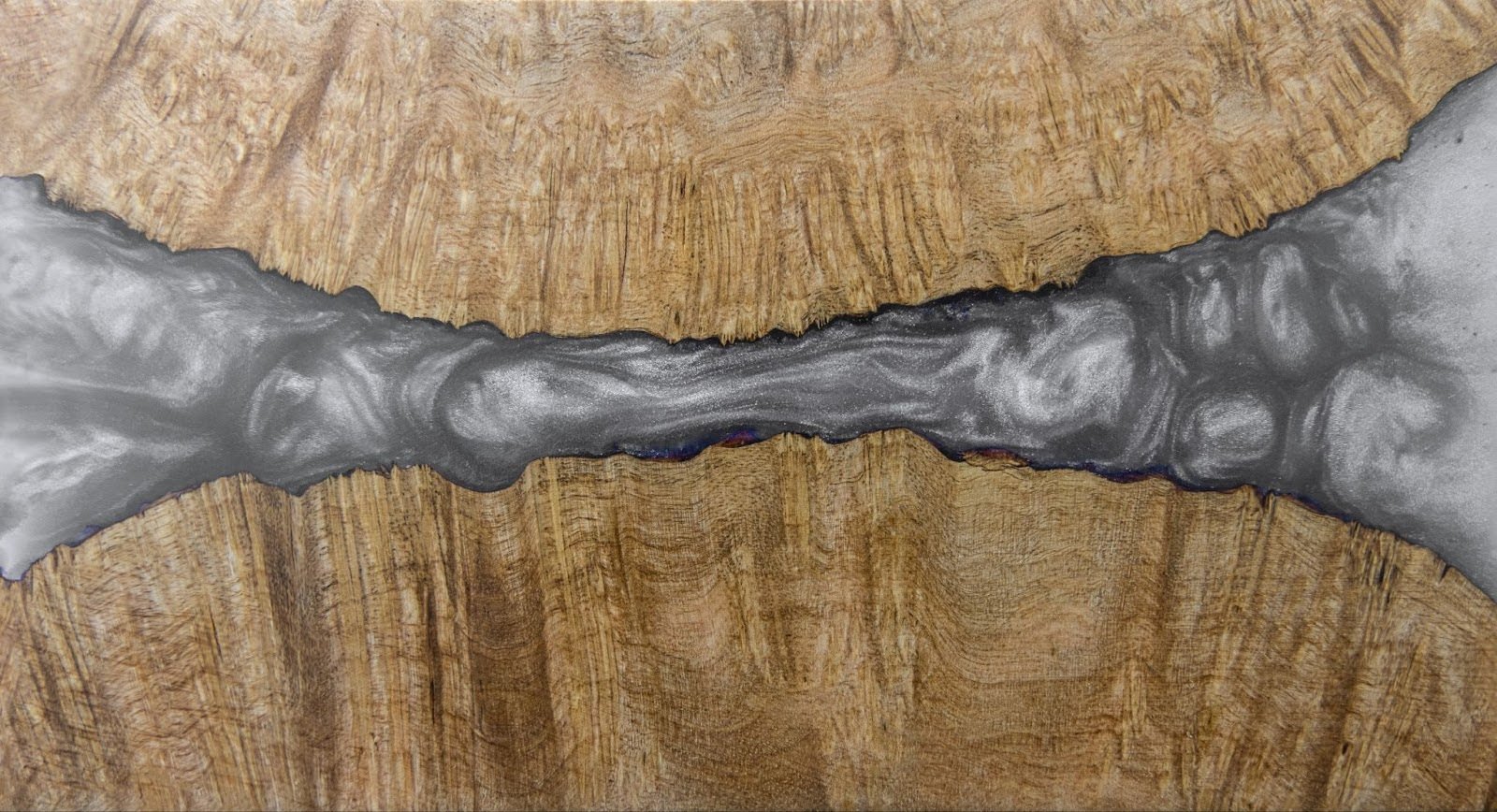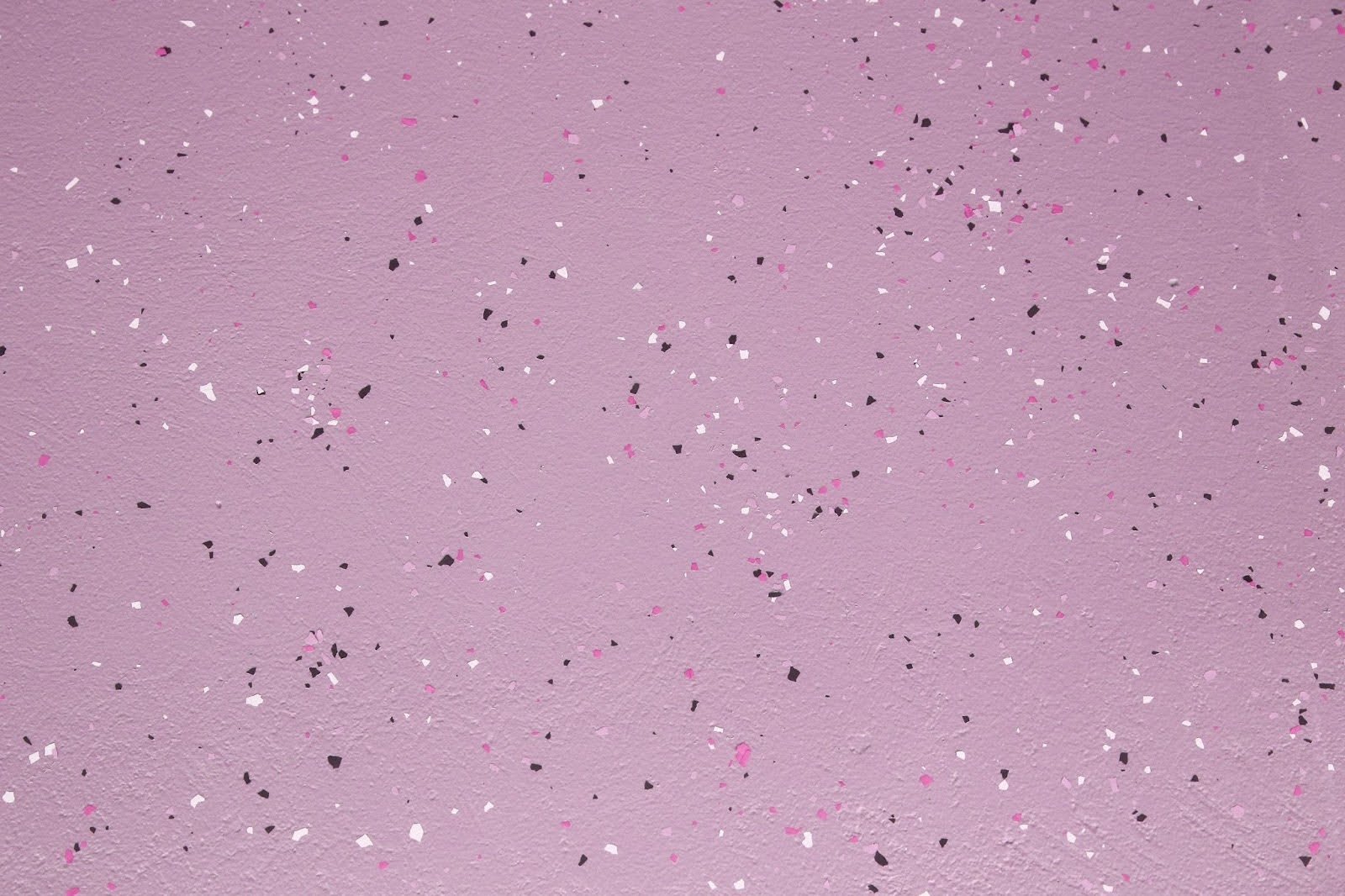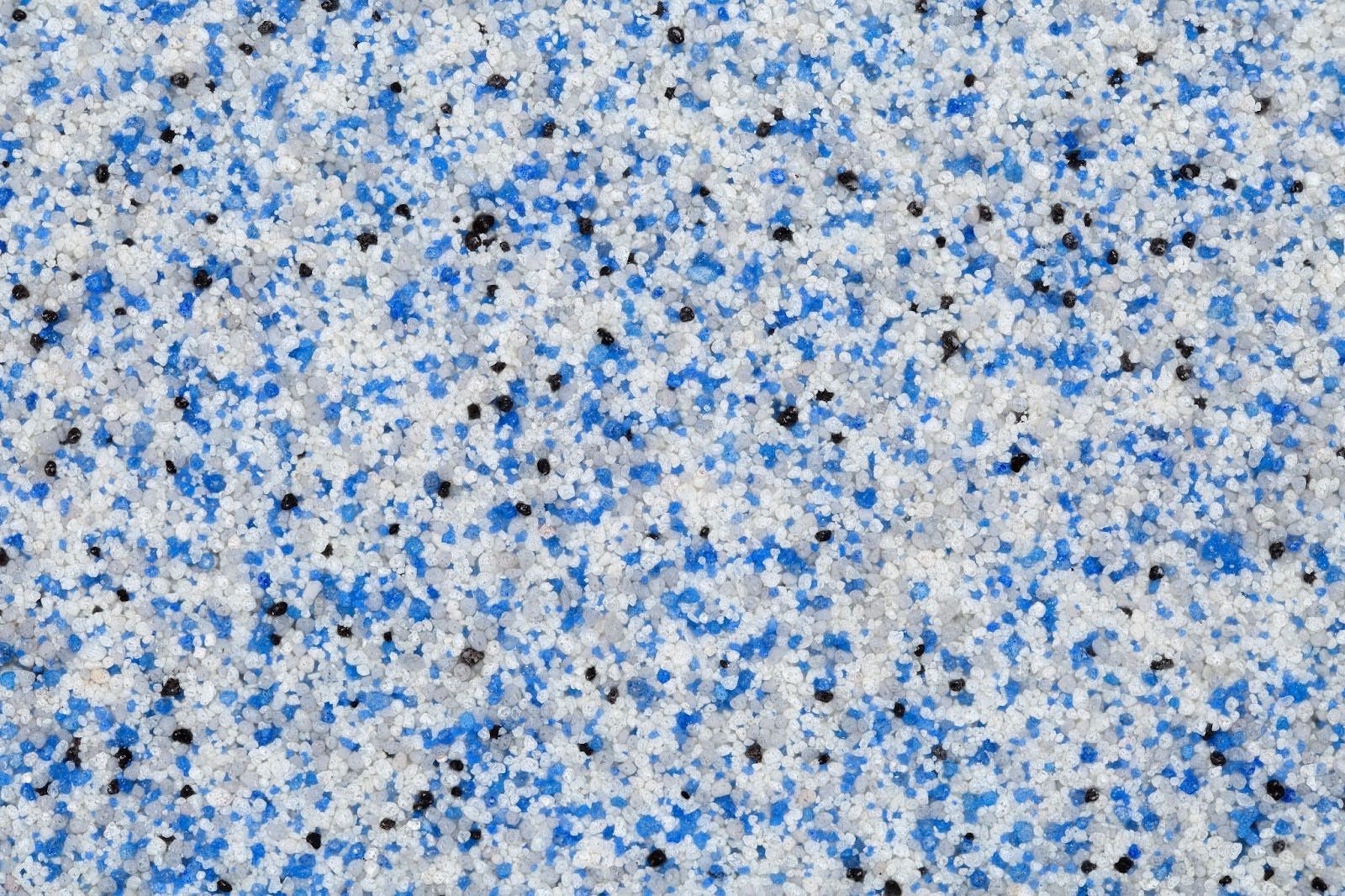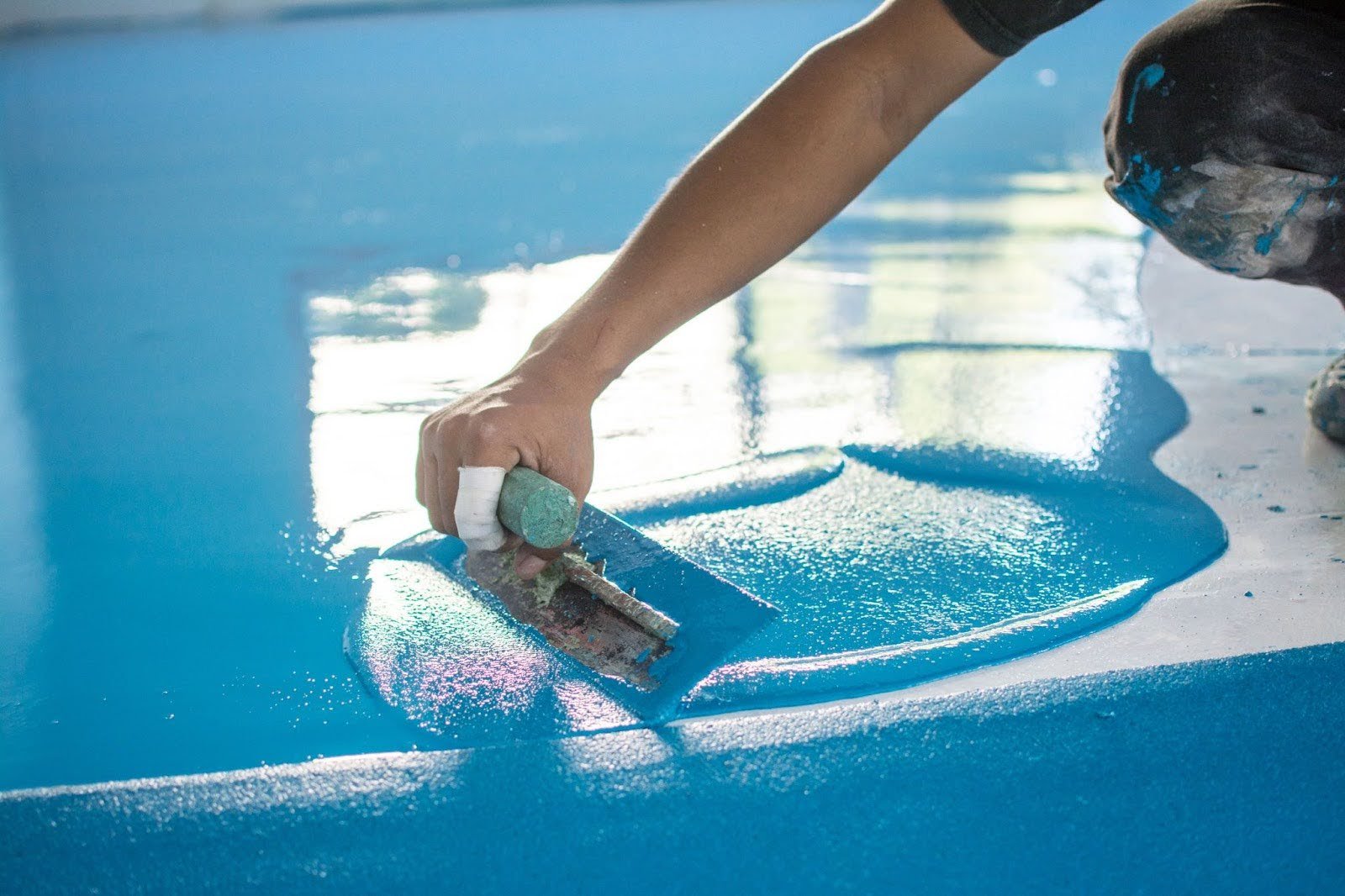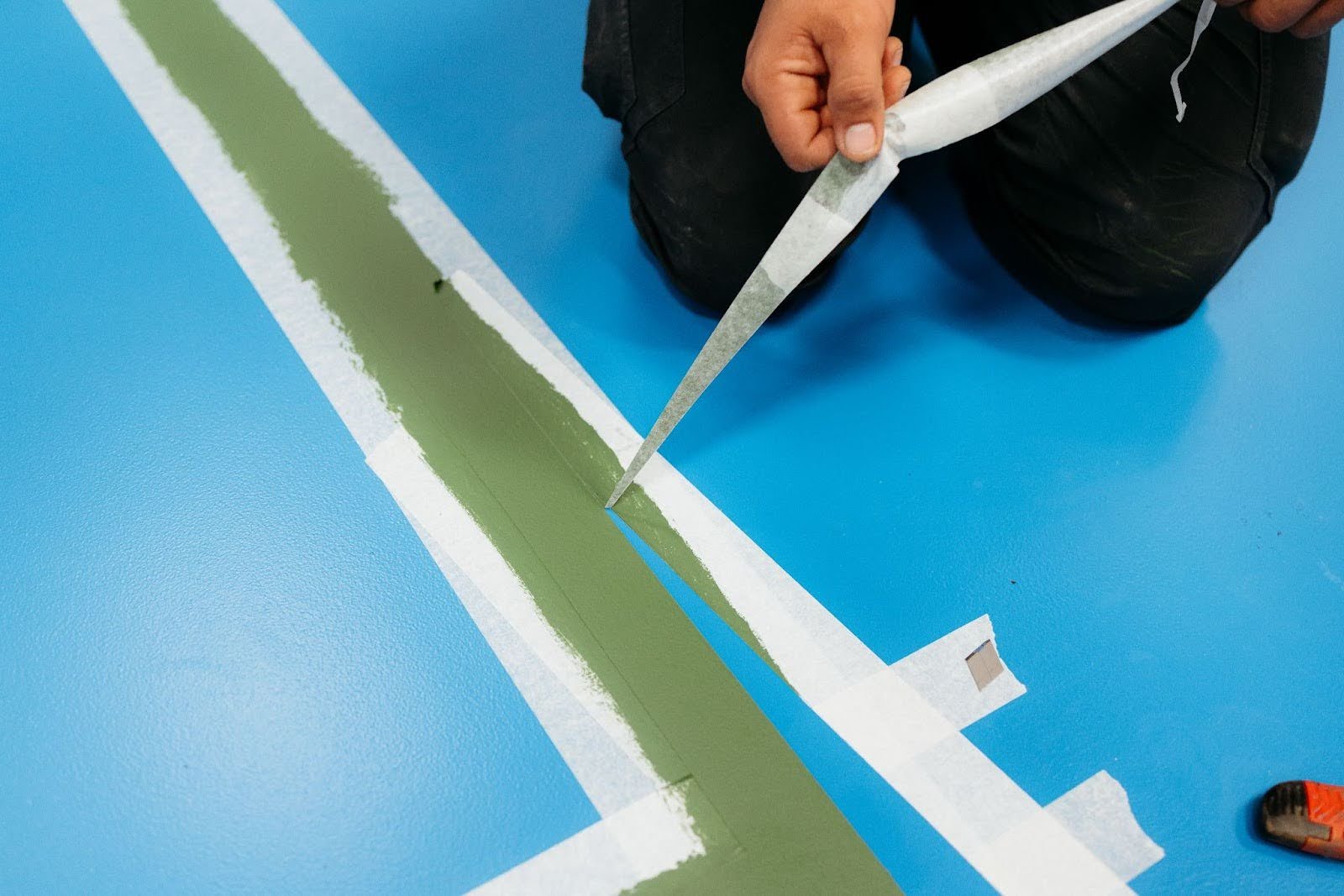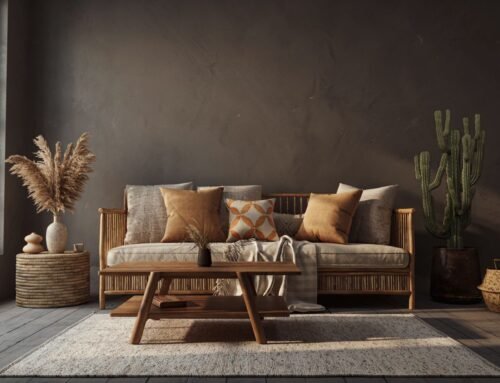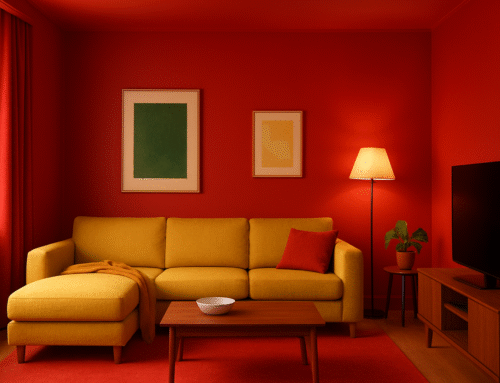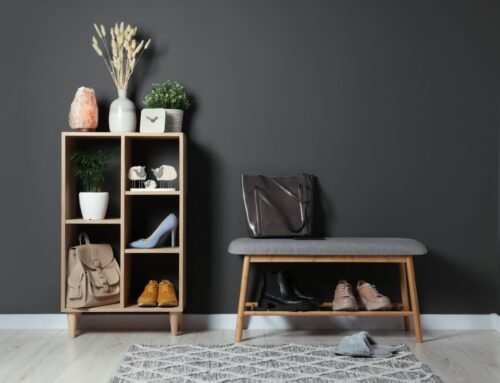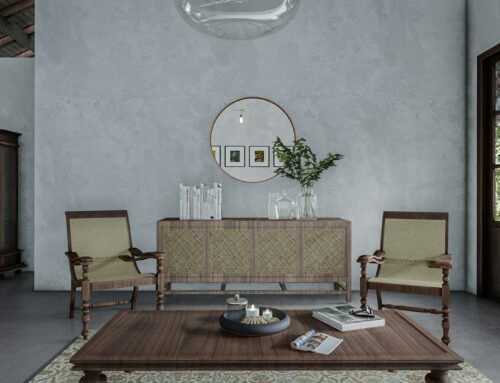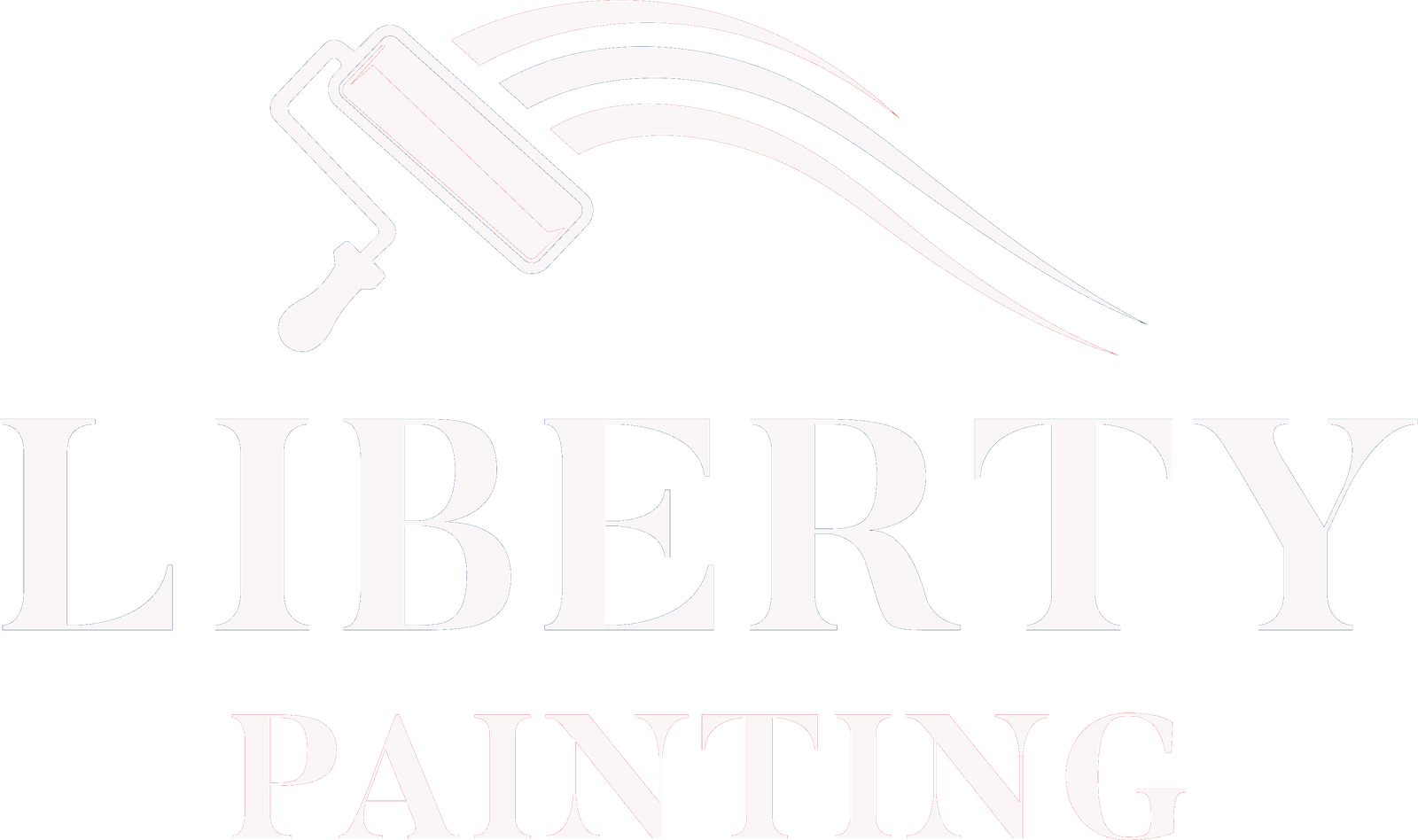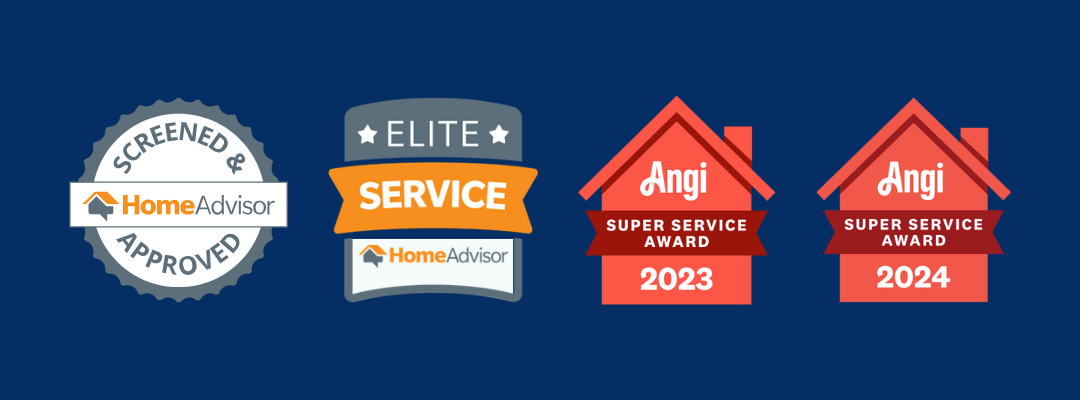Key Takeaways
- Epoxy floor designs can turn your space into a statement piece with the right colors and application technique
- A great epoxy floor finish balances style and durability
- Liberty Painting works with homeowners throughout the Houston area to bring their custom epoxy floor ideas to life
Though you might think of plain, gray garage slabs when you hear “epoxy floor designs,” the style has actually come quite a long way. With the right products and application techniques, an epoxy floor finish can be a design centerpiece, creating a unique layer of texture and depth that feels more like fine art than standard flooring.
Our team at Liberty Painting installs epoxy floor systems throughout Houston in a range of styles and colors. After all, why shouldn’t your floor be just as unforgettable as it is durable?
In this guide, we’ll walk through the most creative epoxy floor designs and take a look at insider contractor tips to give your floor every bit of style it deserves.
A Few Epoxy Floor Design Directions Worth Considering
One of our favorite qualities about epoxy is the range of styles you can create, depending on the pigment, texture, and application technique you use. Some of the most popular epoxy floor ideas include:
- Metallic Swirls – Mimics marble, smoke, or flowing water
- Full Broadcast Flakes – Adds color and depth with superior slip-resistance
- Quartz Sand Blends – Speckled, decorative option with solid durability
- Micro-Flake “Terrazo-Lite” Designs – An upscale yet subtle epoxy floor art design that changes with the light
- Solid High-Build Colors – A favorite for clean, gallery-like spaces
- Logo and Stencil Inlays – Perfect for showcasing a brand logo
- Borders and Ribbons – Creates visual paths or divides the floor into zones
Not every epoxy floor finish works for every location, which is why it’s important to look closely at the pros and cons of each.
Metallic Epoxy
Best for – Retail showrooms, restaurants, and residential basements
Most companies that provide epoxy floor design services often use metallic epoxy as their showpiece. It’s hard to beat the beauty of this classic epoxy floor finish.
By mixing metallic pigments into a clear base and manipulating them upon application, you can create veining, ribbons, and cloudy patterns that look like poured metal.
The color recipe you use truly depends on the space. Charcoal with silver veining looks great in a garage, though a warmer interior might be best suited for a sandy beige or pearl color. Installers will often use squeegees, leaf blowers, or heat guns to push pigments across the floor and create a unique, almost randomized fluid movement.
One of the biggest issues we see with those who opt for the DIY route with their metallic epoxy floor art is bubbling. If it’s not installed correctly, bubbles can rise during the curing process and leave crater-like marks in the floor. The best way to avoid this is by working with a professional.
Do note that metallics can get slippery when wet. If you’re installing it in an entryway kitchen, we recommend adding a satin or matte topcoat with micro-grit for better slip-resistance.
Flake Systems
Best for – Garages, laundry rooms, and workshops
If we had to name a workhorse in epoxy floor designs, it would be the flake system.
To create flake flooring, colored chips are broadcast onto wet epoxy before being sealed with a clear coat. The final product is a durable, textured surface with excellent traction and a unique way of hiding dirt.
With a full broadcast, you get an even, speckled floor, while a partial broadcast leaves more of the base coat visible for contrast.
The chip size you choose can have a big impact on the aesthetic as well:
- Micro (116”) has a refined, almost terrazzo-like look
- Standard (¼”) is the classic style seen in most garages
- Large (⅝”) makes a statement with a bold, graphic style
Some of the most popular flake kits are neutral mixes, such as Domino, which is a mix of gray, black, and white, and Obsidian, an array of earthy tones. You can also match your flooring to your interior palette with a custom blend, like teal, rust, or navy.
Pro Tip: If you’re installing a flake system on your own, the best way to keep flakes flat is to back-roll after broadcasting, then scrape and vacuum the excess before applying a UV-stable polyaspartic topcoat.
Quartz and Silica Sand Blends
Best for – Industrial spaces, commercial kitchens, and pool houses
For traction and durability, you can’t go wrong with a quartz epoxy floor design.
This epoxy floor finish technique includes broadcasting colored quartz into the coating to produce a uniform, high-grip surface.
You’ll often see quartz blends in commercial kitchens, pool houses, warehouses, and pet-care centers.
The texture can be tailored to your needs. For example, if you need more heavy-duty performance, you can apply a double broadcast. Design-wise, quartz floors resemble speckled stone and are often finished with matte topcoats in residential spaces to soften the industrial look.
Solid Color High-Build Epoxy
Best for – Galleries, studios, and modern homes
Sometimes, simple is best, and if simplicity is the goal, go for a solid color epoxy floor design with a high-build application.
Note that with solid colors, the sheen you choose can make all the difference. Glossy finishes are more reflective, emphasizing clean lines, while matte finishes are a bit more contemporary and understated, great for minimalist epoxy floor art.
The best designers will often tape borders or inlays into solid color epoxy flooring to create breaks in the expanse and prevent them from looking like gymnasium floors.
For as beautiful as it looks, this epoxy floor finish is also highly functional. It’s easy to clean, chemical-resistant, and lasts for many years, even with heavy foot traffic.
Logos, Stencils, and Mapped Zones
Best for – Auto showrooms, gyms, and commercial lobbies
The right epoxy floor design can double as a branding asset in your business. With this style, logos and stencils are applied between epoxy layers, then sealed under a clear coat for protection. To get crisp lines, the pigment layers must be thin.
While this epoxy floor art style is most common in commercial spaces, there’s no reason a homeowner can’t use it for a personal touch, such as a monogram in a home gym or a sports team logo in a garage.
What Most Contractors Won’t Tell You
Head to most any contractor website that markets epoxy floor designs, and you’ll hear a lot about its beauty and modern allure. However, any experienced contractor knows that epoxy comes with its challenges. Here are a few real-world truths to consider before you apply it:
- Moisture Can Ruin the Design – When moisture gets trapped in concrete, it can cause bubbles, blisters, or ‘cloudy’ areas. A professional installer will use calcium chloride or in-slab RH testing to measure vapor emissions. If a floor exceeds the safe range, a moisture barrier primer must be applied first.
- Amine Blush is Risky – In humid conditions, epoxy can cure with a cloudy, waxy film. This is a sign that the dew point wasn’t managed correctly by the installer. Fixing the issue requires buffing and washing before recoating.
- The Way It’s Mixed Matters – It’s best to work in small batches with filtered pours, as it helps avoid lumps, nibs, and early kicks.
These issues are rarely mentioned in glossy epoxy flooring design brochures, but they can make all the difference between a floor that looks good on day one and one that still looks good years later.
Showcase Your Style with Epoxy Floor Art
There’s no reason epoxy flooring can’t be just as design-forward as it is durable. With metallic veining that resembles marble or terrazzo-like flake systems, your floor can easily double as a work of art.
Our team at Liberty Painting offers a creative eye and technical know-how to help home and business owners throughout the Houston area bring their epoxy floor ideas to life and enjoy them for decades to come.
Schedule your free consultation and turn your space into a custom design statement with the right epoxy floor finish.

